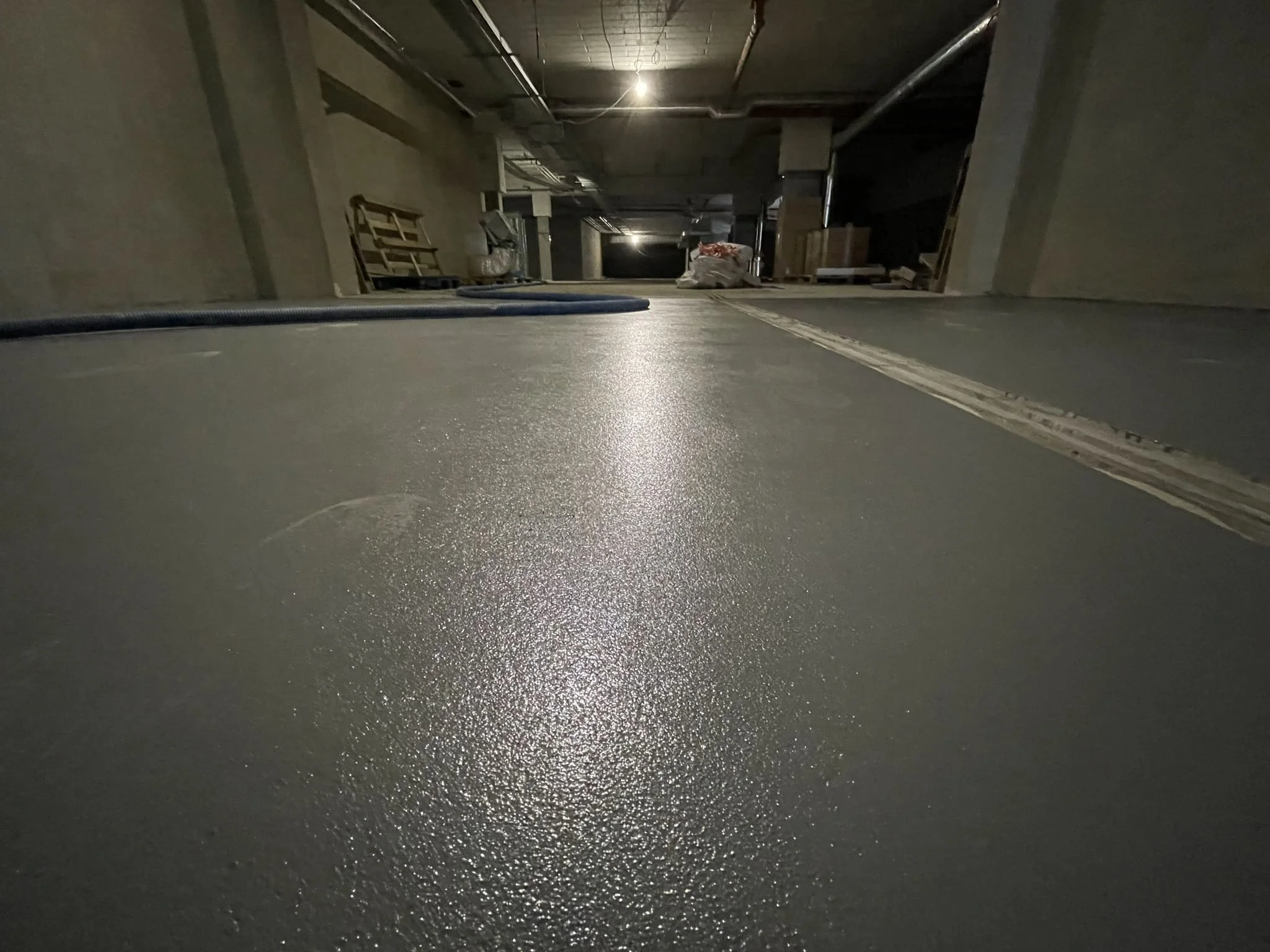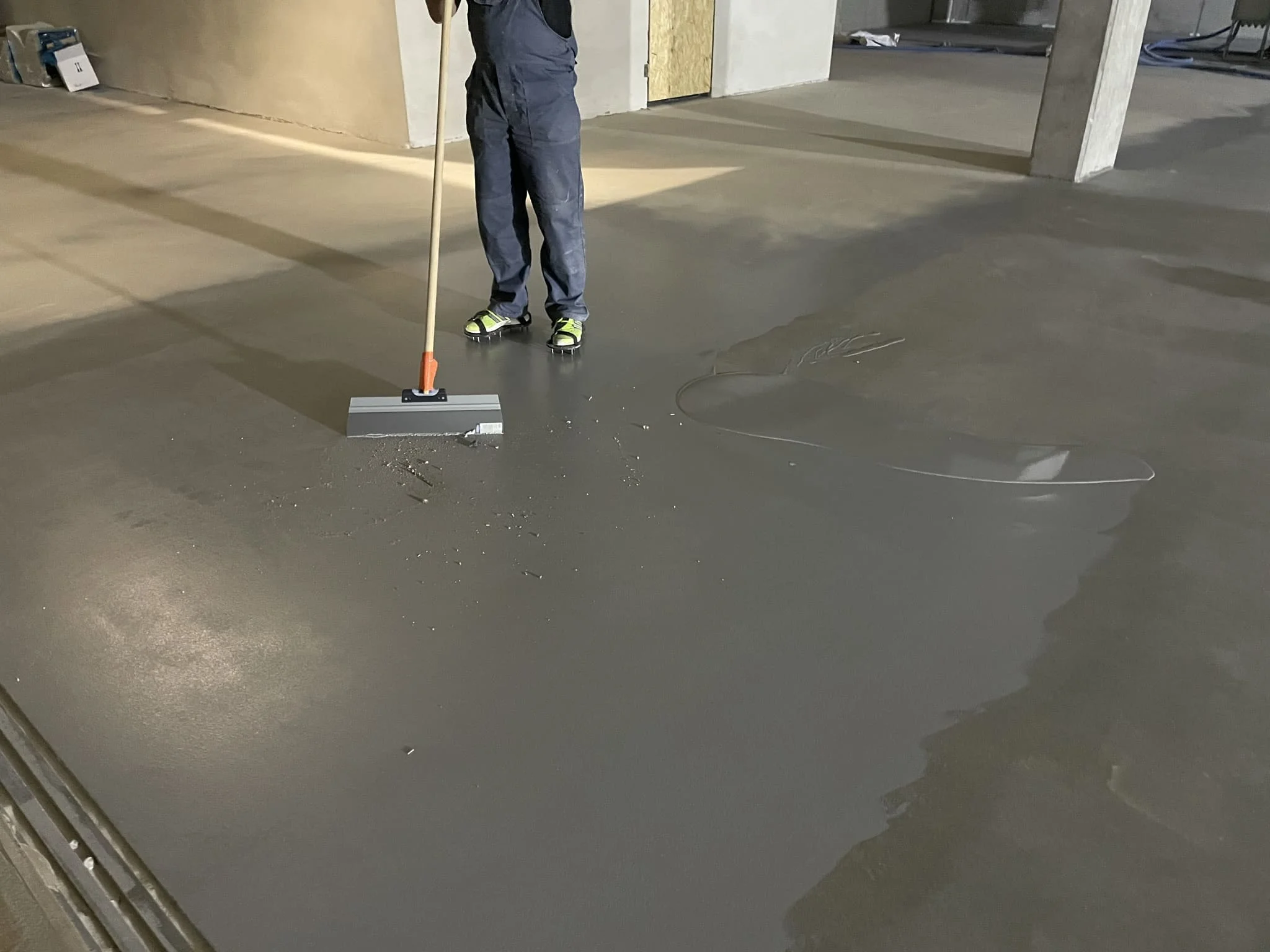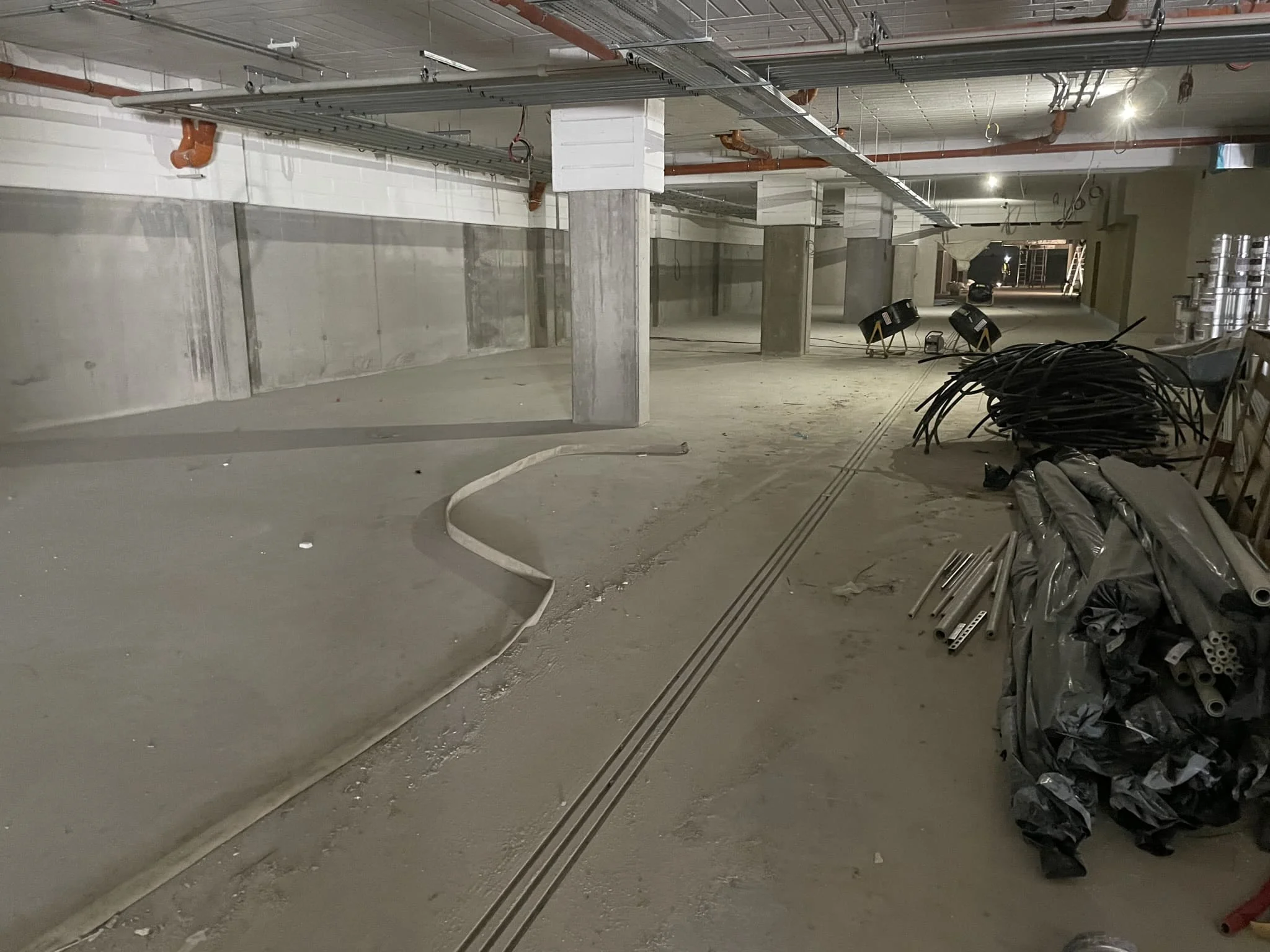Resin flooring for a hospital - a guide for people who want to make the right decision
A hospital is not just one room, but a whole "small world" with very different conditions - from a frosty parking lot, through corridors, kitchens, laundries, to operating rooms and laboratories.
Each of these areas has different requirements for a hospital resin floor. So before we talk about epoxy and polyurethane resins, let's quickly map out what floors are found in European hospitals and why.
What floors are used in hospitals in Europe - from parking lots to operating rooms
Parking and multi-story garages. Resin coatings on concrete, most often epoxy or polyurethane parking systems with crack-bridging properties. Requirements include resistance to abrasion, road salt, oils and fuels, slip resistance, and often waterproofing of the floor.
Entrances, halls, corridors. Most often, seamless resin or flexible flooring, less frequently stone or tile. Requirements include ease of cleaning, resistance to wheelchairs and beds, noise reduction, and slip resistance.
Wards, patient rooms, and clinics. PVC flooring in rolls, rubber floors, or decorative resins. Comfort, hygiene, and wall-mounted connections are required.
Treatment rooms, diagnostic imaging, intensive care rooms. Seamless resin floors or flexible floor coverings in antistatic/dissipative (ESD) versions. Required - conductivity/dissipative, resistance to decontamination, no joints.
Operating rooms. Seamless resin or conductive PVC flooring. Requirements: premium hygiene, resistance to strong disinfectants, matte surface, curved plinths, often light colors for cleanliness monitoring.
Laboratories, hospital pharmacies, clean rooms. Hospital-grade epoxy or polyurethane resins, sometimes with conductive additives. Requirements: chemical resistance, low emissions, and a smooth, seamless surface.
Kitchens, washrooms, laundries, and central sterilization rooms (CSSD). Most often, industrial anti-slip tiles, in resins – strong anti-slip properties and slopes to grates. Requirements include resistance to hot water, steam, and thermal shock, grease and detergents, wet anti-slip properties, tightness, and plinths.
Technical rooms, engine rooms, boiler rooms. Epoxy coatings or concrete industrial floors with high chemical and mechanical resistance.
Wet areas (bathrooms, showers, hydrotherapy). Anti-slip resin systems or tiles, slopes and drainage are key.
Offices, conference rooms. Carpet or PVC/LVT flooring, sometimes decorative resins.

What are resin floors and what is the difference between epoxy and polyurethane?
Hospital flooring resins are seamless coatings applied to concrete or existing substrates. Once cured, they create a hard, sealed surface that's easy to clean. The two most popular are epoxy and polyurethane. A polyurethane-cement variant and rapid MMA systems are also being used in hospitals.
Epoxy resins - advantages and limitations
This is a two-component material that, after mixing, hardens into a uniform, very hard coating. Typical thicknesses in hospitals are 2-4 mm as a self-leveling floor, thinner as a paint coating, or thicker with an anti-slip coating. Very good mechanical resistance to concrete grinding and chemical resistance. Smooth, easy to clean, tight, and jointless. Conductive/ESD versions available (for operating rooms and diagnostics). Uniform colors, terrazzo effects, decorative floors with flakes or colored quartz.
Brittle compared to polyurethane – it doesn't withstand impact and substrate movement as well. It may yellow under UV exposure. PU cement is usually better for very wet, hot environments and thermal shock.
Polyurethane resins - a wide family and greater "elasticity"
These are two-component coatings with greater flexibility than epoxy. This family also includes hybrids and polyurethane-cement coatings. They offer improved impact and vibration resistance and are forgiving of minor substrate movement. Aliphatic polyurethanes are UV stable, making them suitable for bright, representative, and intensely lit areas. They also offer the option of building "comfortable" systems with a flexible primer.
Classic PU coatings don't always match the chemical resistance of epoxy for hospital floors to certain media. The system and topcoat must be selected for specific media. The components, prior to curing, contain isocyanates, so crews must be trained and equipped with protective equipment.

What must a resin floor in a hospital meet – practical requirements?
Hygiene and cleaning. Seamless, sanitary baseboards, and a 15 cm wall extension facilitate cleaning and eliminate "dirt lines." Resistance to disinfection of industrial flooring - check if the system has been tested for resistance to chemicals used in hospitals. It's worth asking the manufacturer for a resistance table and references. Matte or semi-matte - reduces reflections and helps visually assess cleanliness.
User safety. Slip resistance is selected by zone. For dry areas, R9-R10 is sufficient, while for wet areas and kitchens, R11-R12 is more common. Conductivity/ESD where necessary – operating rooms and some laboratories require dissipative floors. The manufacturer should provide resistance measurements and compliance with ESD standards. Marking and colors – seamless resin flooring for hospitals easily accepts lines, pictograms, and color zoning.
Resistance and durability. Mechanics - resistance to abrasion polished concrete, impacts, and wheels. In corridors, a flexible primer or a PU coating helps. Chemicals - resistance to cleaning agents, disinfectants, body fluids, iodine, fats, and alkalis. Crack bridging - in new buildings and over expansion joints, consider flexible systems that will "bridge" small cracks in the concrete.
Comfort and acoustics. In corridors and patient rooms, "comfort" systems with a flexible underlay or thin-layer commercial cement floor are effective – quieter and less tiring for staff and patients.
Compliance, Documents and Emissions
Indoor air emissions (VOCs). Choose low-emission systems, looking for markings and reports such as AgBB/ABG (DE), EMICODE EC1/EC1PLUS, A+ (FR), M1 (FI), Blue Angel, and EPD/HPD. This confirms that the cured floor is odorless and does not emit harmful vapors. Avoid solvent-based systems in operating hospitals unless absolutely necessary.
Certificates and CE marking (Europe). Declaration of Performance (DoP) and CE marking - resin flooring products are usually subject to EN 13813 or EN 1504-2. Reaction to fire - classification according to EN 13501-1, for floors often Bfl-s1. Hospitals usually require low smoke development (s1). Slip resistance, for example concrete milling - test reports DIN 51130 for footwear, DIN 51097 for barefoot.

Planning and execution - some practical tips
Review the zones, list the rooms and their requirements (dry, wet, chemicals, ESD, slopes, plinths). Select the system – primer, base coat, topping, topcoat, plinths, and drainage details. Moisture, concrete strength, and cracks must be diagnosed and repaired before application. If you have demanding disinfectants or are concerned about stains, request a test on a real material. For parking safety, don't forget about safety barriers.
In short: epoxy or polyurethane for the hospital?
Hard epoxy, suitable for floor repair, very chemically resistant, great for laboratories, ESD for operating rooms, corridors - provided it has good anti-slip properties and a matte top.
Polyurethane is more flexible, often more comfortable to walk on, and better at resisting impact and light. A good choice for hallways and representative areas.
A well-chosen resin floor for a hospital can last for many years – it's watertight, easy to keep clean, safe, and aesthetically pleasing. The key is matching the system to the area, choosing low-emission, proven solutions, and paying attention to the details of the installation. If you get these three things right, patients, staff, and the technical department will be satisfied.





